-
1 of 253523 objects
Liber chronicarum 12 July 1493
50.0 x 67.5 cm (open) (whole object) | RCIN 1071477

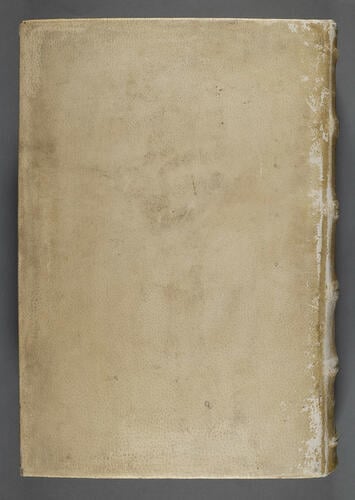
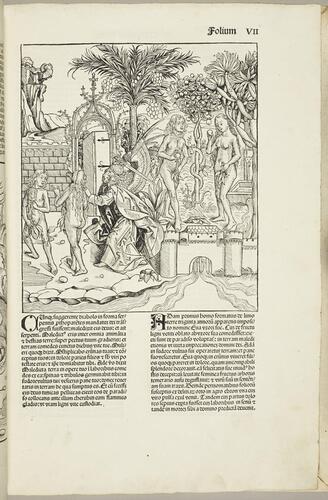
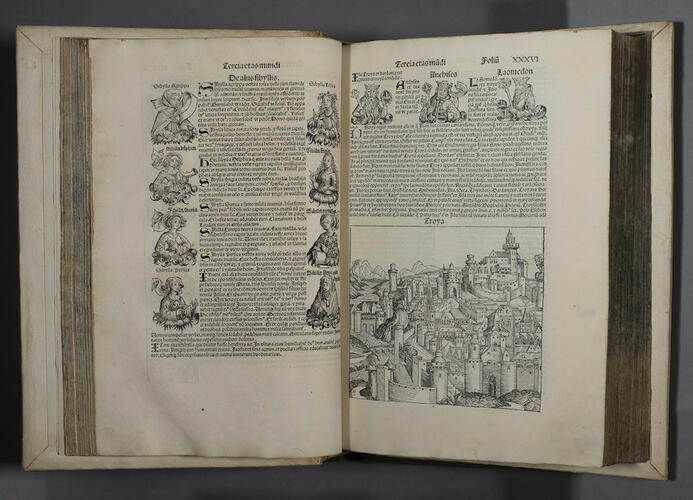
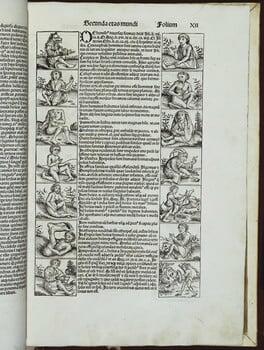
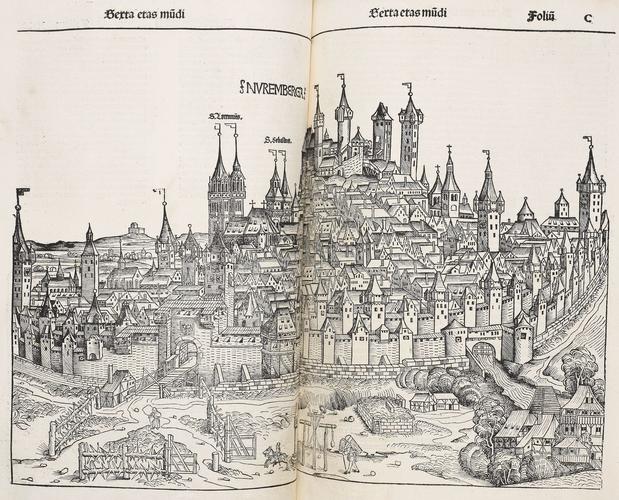
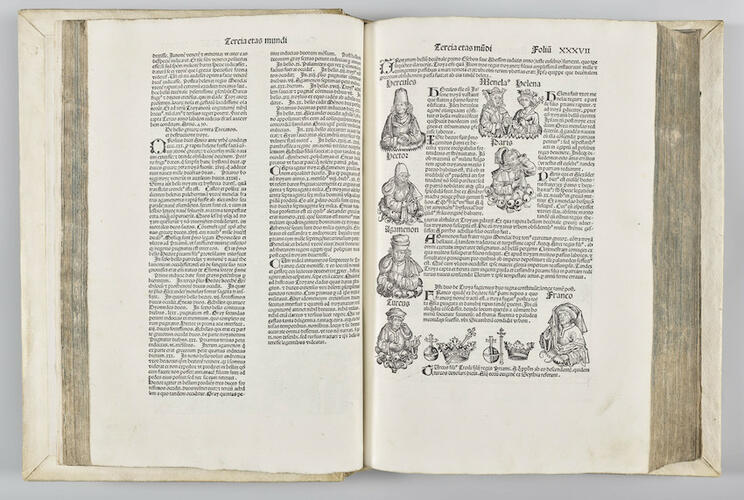
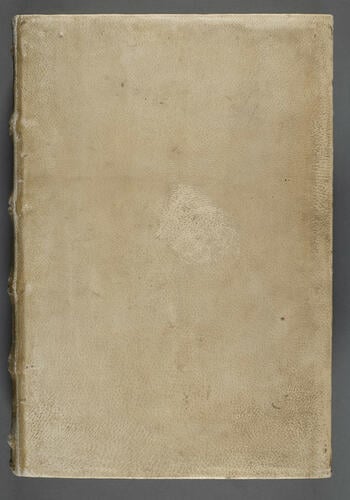
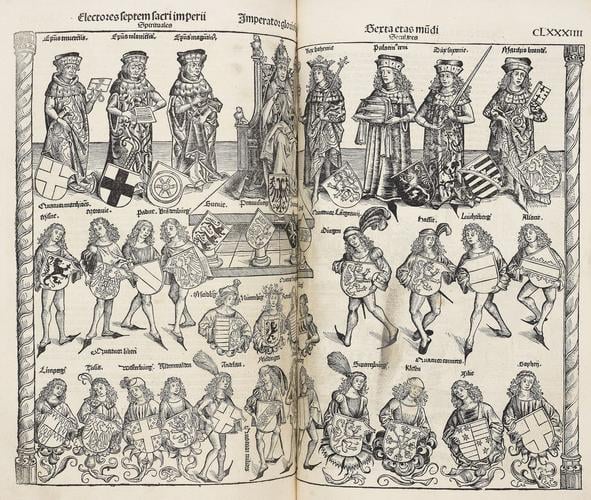
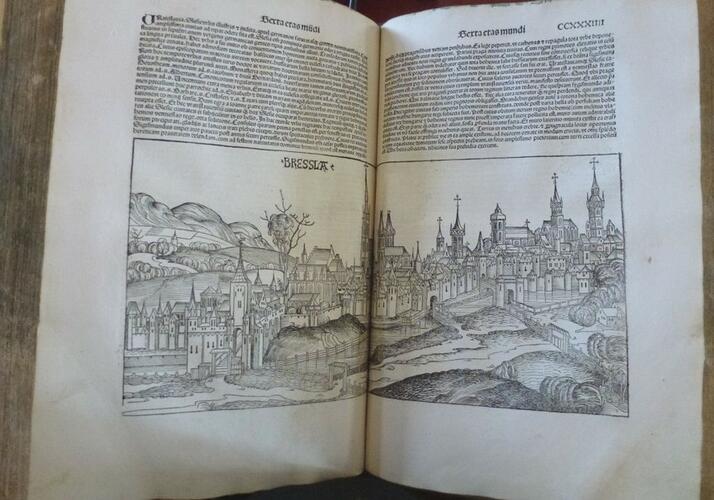
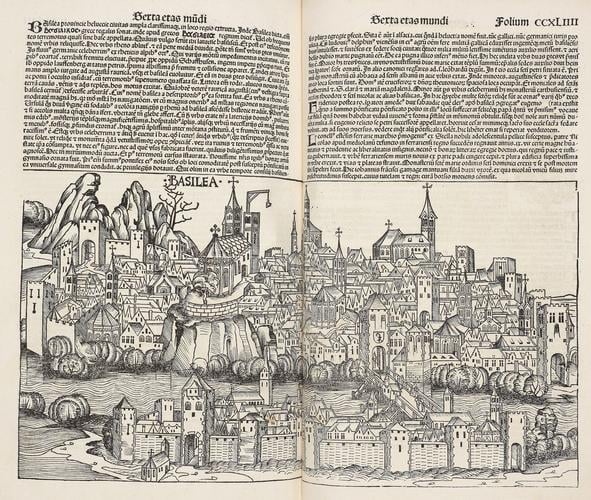

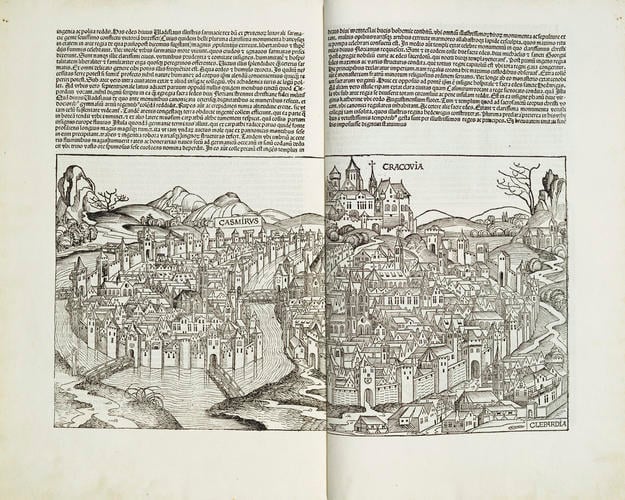
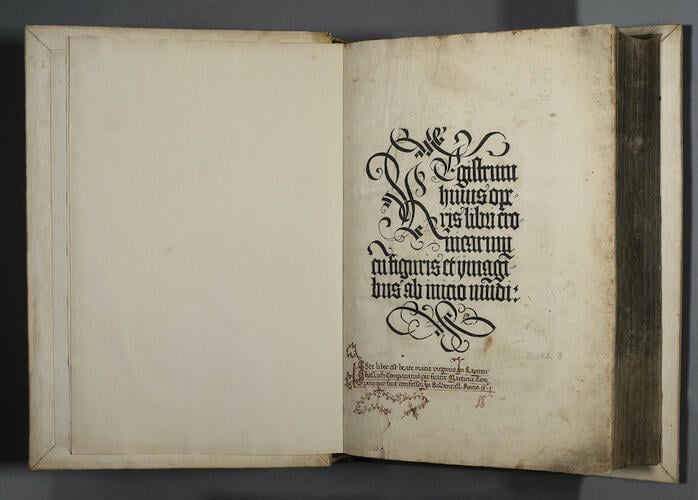


-
The Liber chronicarum—often referred to as the Nuremberg Chronicle throughout the English-speaking world—is among the most recognisable and celebrated books of the fifteenth century. Compiled by the German historian and physician Dr Hartmann Schedel (1440–1514), and printed at Nuremberg in July 1493 by Anton Koberger (d. 1513), the Chronicle is a pictorial history of the world from the Biblical Creation through to events of the 1490s. It weaves together history, myth, and legend drawn from a range of contemporary and medieval sources. The text is entirely in Latin; a vernacular edition in German, slightly simplified to appeal to a wider audience, would follow in December 1493.
Both the Latin and German editions of the Chronicle contain over 1800 illustrations, cut from some 640 woodblocks by the painter and engraver Michael Wohlgemuth (1434–1519) and his stepson Wilhelm Pleydenwurff. It is the most densely illustrated of all incunabula and a testament to the technical ingenuity of the first five decades of printing. Biblical scenes, family trees, portraits, and fabulous creatures are interspersed with maps and views of towns and cities in Europe and the Near-East. Most of these views are entirely imaginary, and about half of them use the same 14 woodblocks; however, the double-page views of cities, of which there are 32, were based on contemporary depictions.
Schedel structured the main sections of the Chronicle according to the 'Six Ages of the World' devised by Saint Augustine of Hippo (354–430):
Prima etas mundi (Fol. 6v–10v): from Creation to the Flood
Secunda etas mundi (Fol. 11r–21r): from the Flood to Abraham
Tercia etas mundi (Fol. 21v–46r): from Abraham to King David
Quarta etas mundi (Fol. 46v–63v): from King David to the Captivity of the Jews in Babylon
Quinta etas mundi (Fol. 64r–94v): from the Captivity to the birth of Christ
Sexta etas mundi (Fol. 95r–261v; cont. 267r–267v): from the birth of Christ to the present day (i.e., 1490s)
The sixth age—by far the longest of the sections—concludes with three blank leaves, on which the reader is encouraged to record more up-to-date events as they witness them. However, the briefness of this gathering of blank pages suggests not only economical but also theological concerns. Immediately following this, the final age, the Septima etas mundi (262r–264v), opens by reminding the reader that "[i]n the beginning of this work we said . . . that the world will have an end" [1]. This heralds the Antichrist (of whose impending arrival there are "definite indications") and the end of the world that will follow. These final sections are accompanied by spectacular woodcuts depicting apocalyptic scenes and the Final Judgement.
Binding
Twentieth century rebinding by New bookbinder, Eton. Full alum-tawed pigskin over wooden boards, sewn on four pairs of double flexible raised bands; single-core cloth-covered headband.
References
[1] Translations here and in the following sentence from Kosta Hadavas (ed.), First English Edition of the Nuremberg Chronicle (University of Wisconsin–Madison Libraries, 2023). https://digital.library.wisc.edu/1711.dl/3SXNV3NHBQLFQ8J.
Provenance
Previously belonged to the Cistercian Abbey at Raitenhaslach, Upper Bavaria (suppressed 1803); title-page inscribed with the name of the monastery and dated 1501. Table of contents rubricated, with elaborate penwork initials in red and blue; fol. I also rubricated. The section on Pope Joan (fol. 169v) has been crossed through along with her woodcut portrait, and traces of adhesive are visible (presumably the text and illustration were once hidden by scraps of paper); the reference to Joan in the table of contents was also obliterated. There are few other signs of use.
Probably aquired for the Royal Library during the reign of King George V. -
Creator(s)
-
Measurements
50.0 x 67.5 cm (open) (whole object)
Other number(s)
ISTC : Incunabula Short Title Catalogue – ISTC is00307000Alternative title(s)
Liber chronicarum / Hartmann Schedel.
Nuremberg chronicle.
Place of Production
Nuremberg [Bavaria]